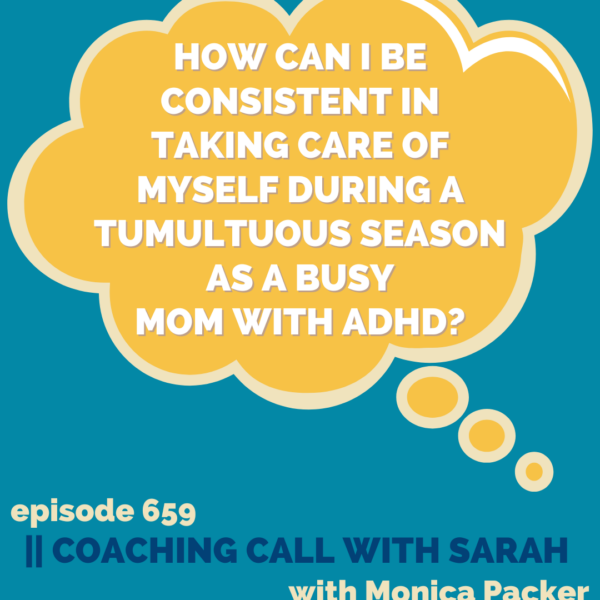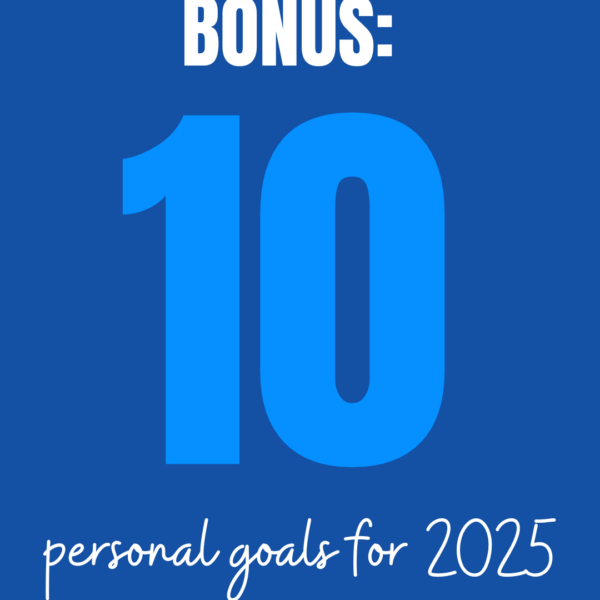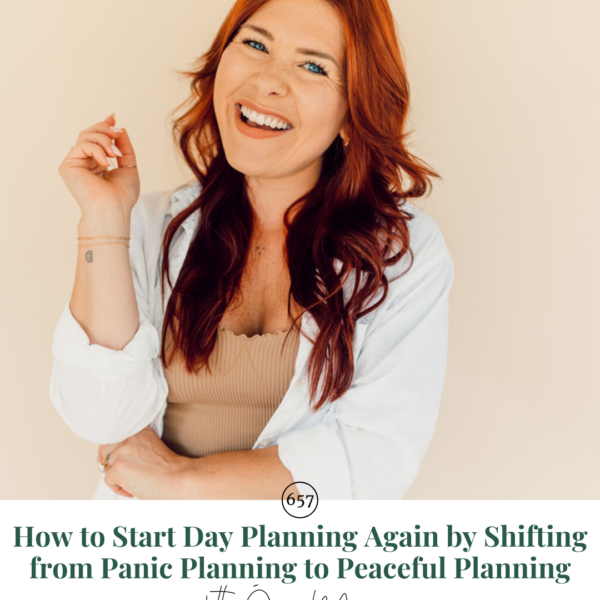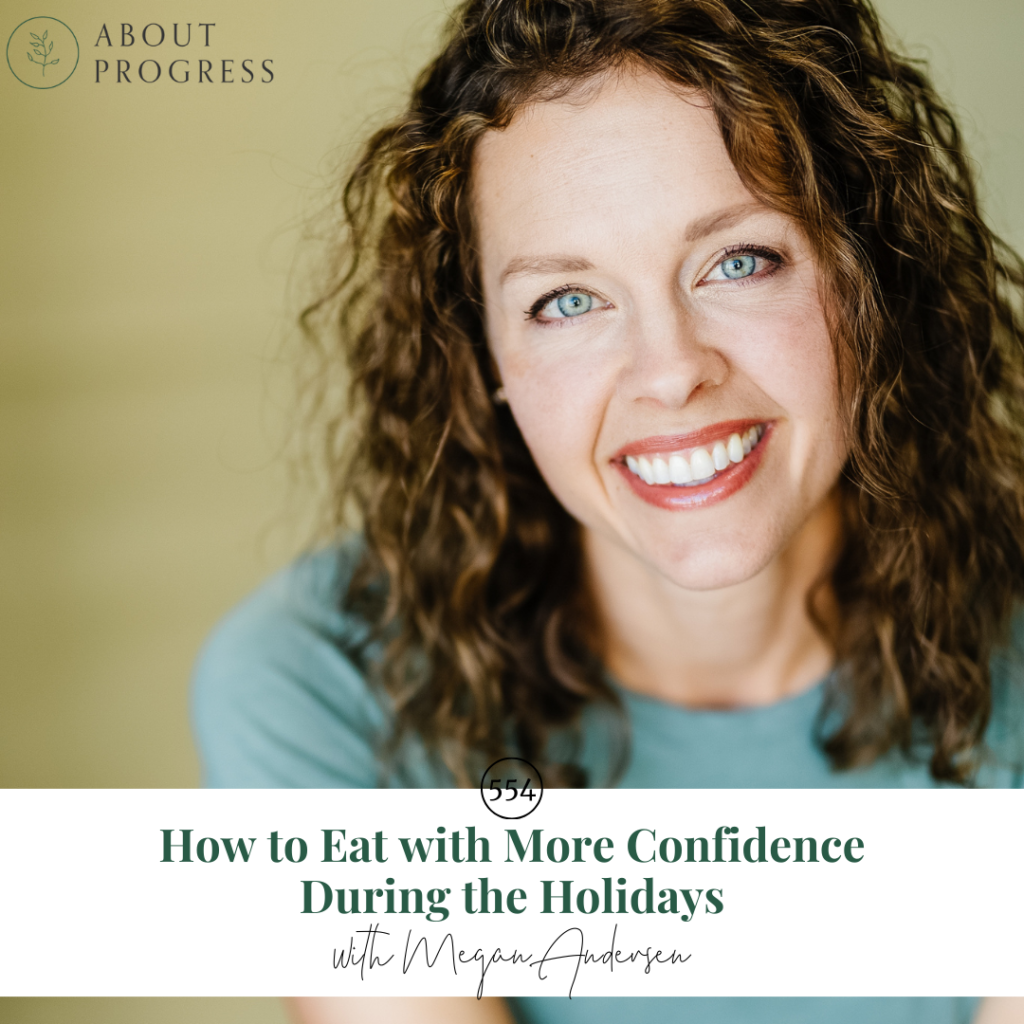
This episode is all about reclaiming joy and confidence in our relationship with food during the holiday season. In this conversation with Megan Andersen, a nutrition coach specializing in intuitive eating, we dive deep into the pressures women face during this time of year. Megan shares her insights on navigating the holiday food landscape without succumbing to anxiety, guilt, or restrictive mindsets.
We explore the concept of “flexibility within structure,” unraveling the idea that there’s no need for an all-or-nothing approach. Plus, Megan provides practical tips on nourishing ourselves throughout the day, emphasizing the importance of adding rather than restricting. So, if you’re ready to approach the festive season with a renewed sense of self-care, joy, and confidence in your relationship with food, this episode is a must-listen. Let’s savor the holidays without the unnecessary stress and guilt—because you deserve it!
Take my free DSL Workshop in January!
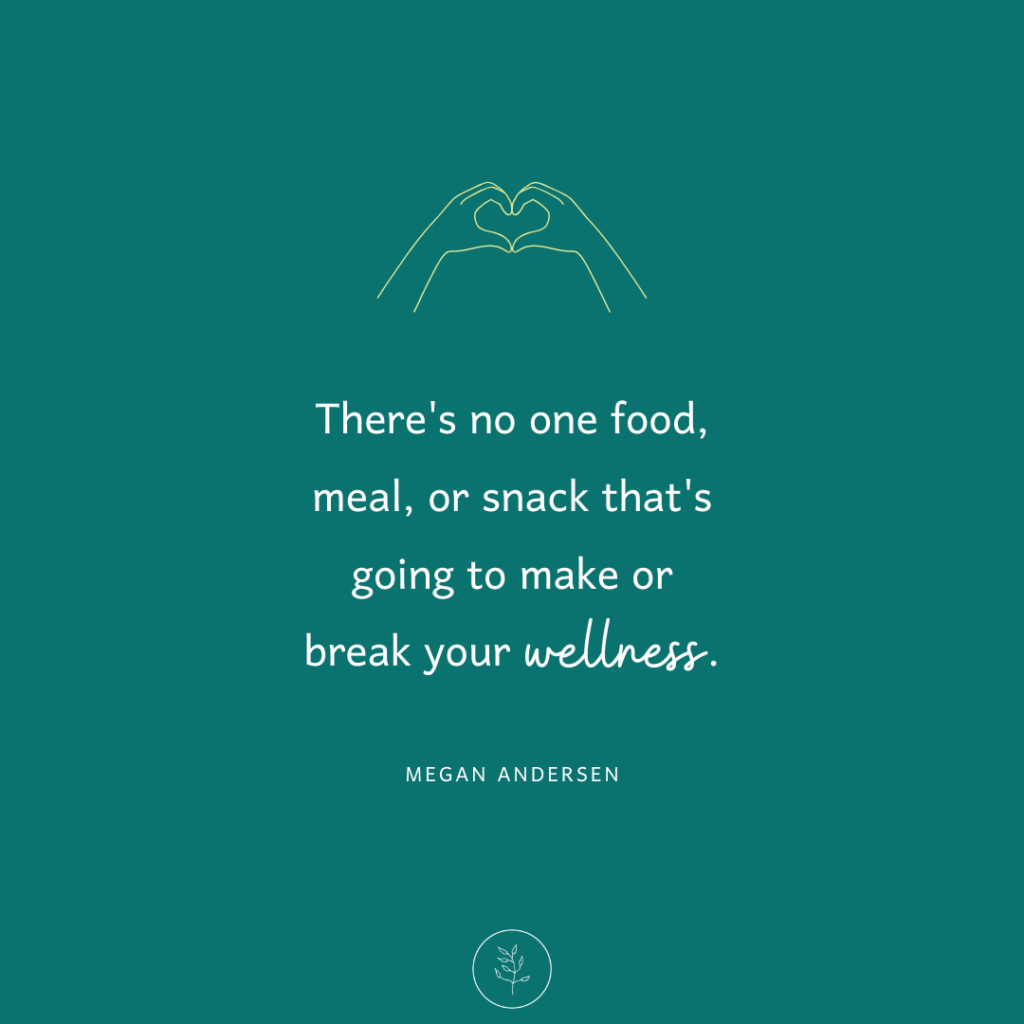
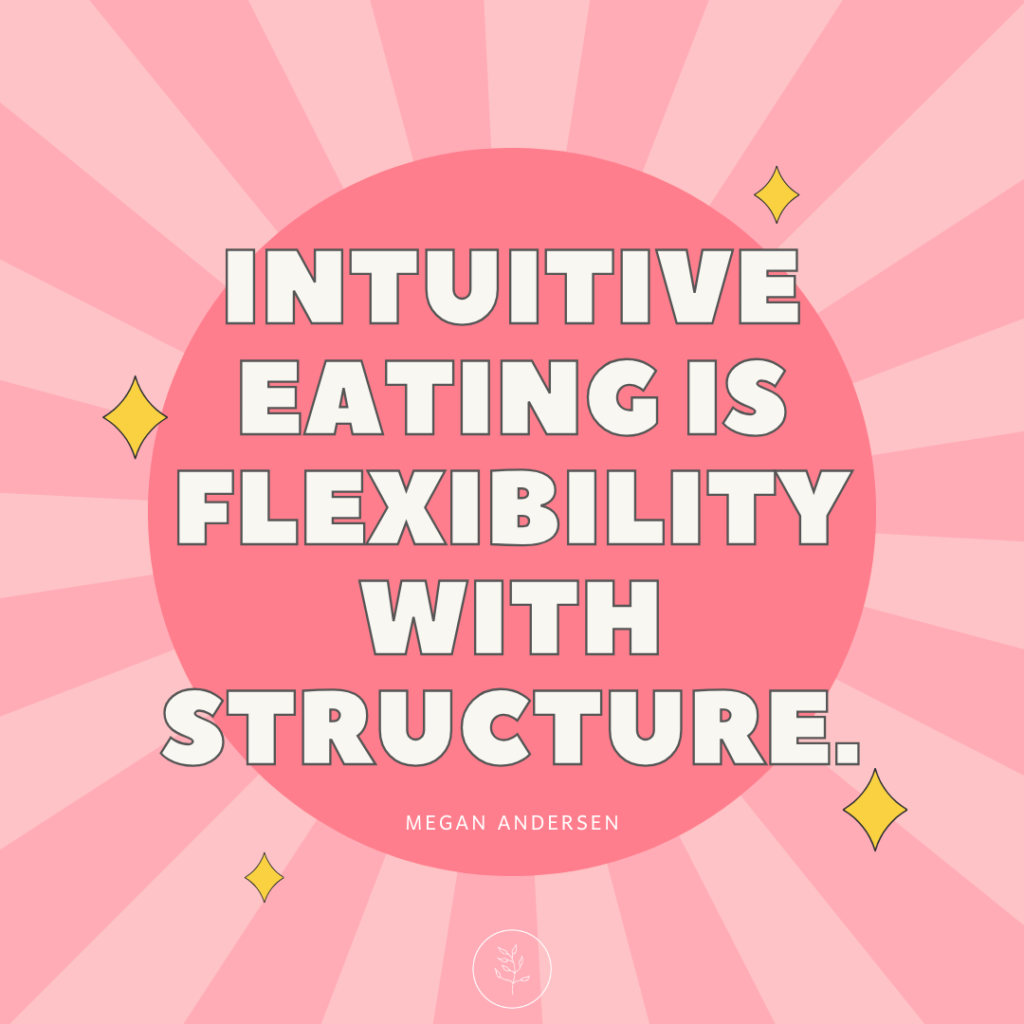
About a few other things…
Do you struggle to create habits that stick? It’s not your fault. The truth is simple: you’ve been trying to form habits using methods designed for perfect robots–not real women living real lives. It’s time to change that. If I could help you gain confidence in creating habits AND guide you to uncover the ONE supportive habit to deeply care for yourself, could you commit 21 days to learning this method? The Sticky Habit Method is a 21-day course that revolutionizes the habit-formation process. It’s real habits for real women.
Sign up for the Go Getter Newsletter to get Progress Pointers in your inbox every Tuesday.
This episode is brought to you by Vionic Shoes (use code PROGRESS)
You can listen the episode below, or on Apple Podcasts/iTunes, Spotify, Youtube, Overcast, Stitcher, Pocketcasts, or search for “About Progress” wherever you get your podcasts. If you like the show please share it, subscribe, and leave a review!!
SHOW NOTES
Megan’s Instagram
Try me FREE Class and check out my NEW Habit Course
Leave a rating and review for the podcast!
Lend your voice and experience + be featured on the show HERE
Join Monica on Facebook and Instagram
Songs Credit: Pleasant Pictures Music Club
TRANSCRIPT
Monica Packer: Megan Anderson, welcome to you about progress.
I’ve really loved being able to learn from you online about nutrition and in ways that really line up with my own values as well as my own experience and history. But you know, I still can come to this point in the holidays and I’m sure many women feel this way, where even though this time of year can be so fun, there’s a lot of pressure and eating is just one of those pressures. So I wanted to start with the holdups that women face as they are entering the holiday season and why it’s a pressure.
It almost seems like our walls go down. So even if we’ve done a lot of work in trying to be better about paying attention to our body and its needs and not being swept up in diet culture when we have so much on our plate, it’s, it’s like some of those ideals and the we’ve learned go out the window and suddenly we’re back to like maybe where we were
In the past where we’re just overanalyzing food, we’re getting anxious about the parties coming up. We’re not sure how to handle ’em, we’re not feeling confident. Uh, anything else you can think of? I.
Megan Andersen: I, I mean, yeah, like if we’re living in a perfect world where we’re in control of all the variables and we’re able to plan our meals and plan what time they’re going to happen, nutrition and wellness is a no brainer, but none of us really even have a single day that looks like that. So this is where flexibility within structure of taking care of ourselves comes, comes into play. And it’s every day. It’s a daily effort to make sure that we’re still taking care of ourselves as we’re juggling all the things. And then of course, the holidays just
adds that extra measure to it.
Monica Packer: So have you ever felt like the holidays made you more anxious in the past? And I’m not just talking about the to-dos, I’m talking about with eating and the parties that were coming up, or like the food that was coming into the house and just feeling more anxious about it.
Megan Andersen: Yeah. Yeah. I was thinking about this as I was preparing for us to chat and putting myself in my shoes where I was. I probably a decade ago, maybe five years ago, when all those neighborhood gifts get dropped off on the doorstep, and it feels like they all come at once in a wave and it’s this overwhelming flood of the foods that you don’t usually have in your home. Don’t tell my neighbors. Sometimes I would just throw them away ’cause it was too much. Right. It was overwhelming and I didn’t know how to control the fear that I was feeling around having that much food in our home that we didn’t normally have access to. And
out of fear, I would say I, I started throwing it away. And things look different now. Um, it’s not this free for all where, um, we all just help ourselves as soon as the snacks drop on the doorstep. But we
have some more, like I said before, there’s some more flexibility within the structure of meals, snacks, treats in our home. But absolutely I, I’d be lying if I said that it never caused anxiety for me before to have all the extra celebrating and food that comes with the holidays. Um, and I think I’d also be lying if I said it doesn’t cause any now, even as a nutritional professional
after the years and years of work that I’ve done, um, it’s still. It’s still something that I have to think about, I have to be intentional about, and it doesn’t come really naturally.
Monica Packer: And when you say you have to think about it, you have to be intentional about it. Are you speaking more about you have to be, uh, mindful of where your thoughts are going and maybe where you’re drifting into anxiety? Or are you talking about the way many of us might? I. Uh, have done this in the past where we’re trying to be careful and intentional, meaning, like restrictive in a way that can just, you know, be also based in anxiety.
Megan Andersen: probably more, more of the first, but because I’ve done so much work on the second, so,
Monica Packer: Okay.
Megan Andersen: it’s more like I have to put thought and effort into the meals and snacks that we’re planning outside of the celebrating and outside of the gifts. I’m going to be able to have the freedom to eat all those wonderful celebratory foods that come, then have to have like that baseline structure of nourishing meals and snacks along the way because that freedom of eating those celebratory foods. Kind of loses its joy when that’s the only food that’s really around that’s accessible. if we’re not having breakfast, lunch, dinner, snacks, and just a counter full of all the goodies, and that’s what we’re filling up on, it doesn’t take too long before the, those foods are not satisfying and they’re, they, they just lose their joy.
Monica Packer: So I wanna get more into the how that you do this. I, I like the idea of a structure with flexibility and having a peace of mind of this confidence in knowing how you are going to nourish yourself in ways that are a little bit more stable and in ways that also feel good for your body, but also making space for being able to have
A, a desire to eat something and eat it because you feel like it and it looks good and it’s something that you love to eat every year. But let’s back up just a little bit because you’re a nutrition coach that specializes in intuitive eating, and a lot of people equate that to a phrase, I heard you say, free for all, and you actually said differently.
Like it’s not just a free for all. So tell me a little bit more about what your philosophy. Looks like in terms of intuitive eating in general, but also, uh, painting the picture of what that looks like, especially around the holidays.
Megan Andersen: So my general philosophy, there’s no one food. There’s no one meal or snack that’s going to make or break your wellness. And the way that I approach food is, like I said before, it’s flexibility within structure. If we’re going to have this freedom with food that I help women to achieve, there has to be options. There has to be options. There has to be, access to meals and snacks that not only taste good to you that are appealing to your senses, but that also feel good when you eat them, they feel nourishing. And if, if I were to, entertain this idea of free for all, which I, I hear it all the time, with intuitive eating. Um, I often
hear, well, if I were to eat what I felt like eating, if I were to have freedom with food, then I would eat donuts all day because those taste
amazing to me and that’s what I want to eat. Um,
but really, if, if we’re going to achieve the true, satisfaction. Nourishment out of
our food. We have to have access to foods that are satisfying and nutritious, and nourishing. So it, it does require some planning. And this is where a lot of people will look at diets. As really appealing, almost like a peaceful way to nourish yourself because we’re coming from a place of chaos. The eating has become really chaotic for us, and so. A diet looks like, Hey, I’ll actually be taking better care of myself as I plan nourishing meals, breakfast, lunch, dinner, and snacks. And the, the problem that we sometimes get into is we get stuck on the specific food that a diet plan has offered or that a diet plan says is okay or not okay. But intuitive eating looks at. Taking care of yourself in a similar way, but without the restriction of specific foods that are good or bad. It’s still planning breakfast and lunch and dinner and snacks, and it’s still taking care of yourself in the beautiful way that, feels so nourishing, but it’s just not so rigid. There’s not specific times where that meal has to happen and when it has to end.
Monica Packer: Everything you’ve said makes it seem more doable and less scary. Including the fact that you’re, that you, even as a nutrition professional, are not immune to the anxieties we all can kind of carry coming into it. But that also doesn’t mean you’re doing it wrong, and it doesn’t mean that you can’t do it in a way that feels good.
And, And it also doesn’t mean that you can’t. Pivot as needed. Like when you notice that you are in a free for all state and, but you’re also not enjoying it and it’s not feeling good, you’re not tasting it. So you can pivot back to a little bit of safety and some structure and then get back to that flexibility too.
Uh, can you tell us more on what that looks like? Flexibility within structure. That’s not something I, I have lived out with an intuitive eating as I’ve worked on this for a long time, but I didn’t ever put that into words on what that actually looks like.
It’s not like every meal I’m trying to start over and say, well, what do I want to eat right now? I do still have that structure in mind. I never really realized I was doing that. So tell us a little bit more about that whole idea.
Megan Andersen: so if we were to look at a hierarchy of our nutritional needs or even just our needs with food, the very, if it was a triangle, the very bottom of the triangle is just getting enough to eat and then it works up from there to, um, eventually getting at the top where it’s functional foods. And sometimes a lot of us try to go straight to the top where we’re trying to eat the right foods and the right quantity of foods for our specific needs. You know, whether we have a health diagnosis or something else. buT we forget that very base at the bottom is making sure that we’re eating enough. It’s really easy to get out of touch of what enough even feels like, especially, um, in our society where it’s, there’s just so much, so many paradoxical views on how to eat and what’s healthy and what isn’t. So it’s really easy to get out of touch. But if you can just start with a general rule that every two to four hours you should be eating something. I just use the should word but If you are to be eating enough food, every two to four hours is the right amount of time. Um, now, does it mean that that’s a meal every two to four hours? What does that look like? Let’s just do an example. So it’s a school day. My kids go off to school. We leave the house by eight. Breakfast is around seven 30. my kindergartner. He’s five, like just barely five. He needs a snack before lunch. So he has breakfast at seven 30. He’s got a snack again around 10, and then lunch is at noon. And do you see how that’s like every two to four hours? And then
I actually need to pack him a snack between lunch and when he comes home from school. So he’s eating again around two, and then he’s still coming home starving and he’s eaten all of those things. Now, we aren’t 5-year-old kindergartners, but there’s something to be said about the way that a child acknowledges hunger and the way that they feed themselves, and it’s so much more fluid and natural, and there’s no all or nothing. They eat when they’re hungry. They stop when they’re full. There’s something that happens as we grow up, where we kind of lose that. And I think it’s because of the voices that we’ve heard around us, not snacking in between meals maybe, or that there’s certain times when it’s okay to eat and when it’s not okay to eat. but I watched that little boy come home from school and he’s usually. Really cranky, right? Like it’s been a long day. He’s been working really hard. He’s tired and he’s hungry. And so before we really do anything else, we feed the five-year-old, and then he becomes his happy self again. But how often as women do we forget that we’re just going, going, going, taking care of everyone else’s needs? Motherhood is such a beautiful practice of serving and giving of yourself. Sometimes we give to the point where there’s nothing else left to give, and I see it all the time with the way that we feed and nourish ourselves. We’re actually just not getting enough to eat to be able to continue to give at our best.
Monica Packer: You know what is fascinating, Megan, is when I first heard you talk about flexibility within structure, I went right to. Well, what you’re allowed to eat, and you flip this for me a lot, so when we’re thinking about structure as someone who is also wanting to be an intuitive eater, we’re starting with that baseline or the base of the pyramid, like you said, of making sure we’re eating enough.
Period. We’re not going to rules, we’re not going, although, you know, some of that functional side can come into play as I, I know, you know, as a someone who helps, people who have specific health needs that demand that they maybe eat differently because of diabetes or cholesterol issues or other things that are at play.
Um, but anyway, I just love that. That to me is a structure I wouldn’t have realized as a structure, as I head into the holidays, am I making sure I am eating enough? I. , and that’s the structure.
Megan Andersen: As we’re going throughout our day, if we aren’t eating enough, then that’s when, at the end of the day typically is when the celebrations start, right? Or when the things are getting dropped off on your doorstep. So I think a lot of times where the anxiety and the stress comes with all those celebratory foods is that we haven’t been eating enough. Up to the foods and then we feel fear and we feel out of control when those foods are presented to us. ’cause we just haven’t eaten enough leading up to that.
Monica Packer: To me, that’s where that, that structure is, you know, and just having that peace of mind that I have fed myself, I’ve nourished myself today, and I’m not entering this with this gnawing hunger. I have taken care of myself and now I can eat with joy and really pay attention to my taste buds and what I’m actually liking and what I’m not, and be able to better have the control.
I was gonna ask if there are any other pieces of that structure, piece of the puzzle that they can be aware of as they head into the holidays in particular.
Megan Andersen: I mean, as you were saying, as you were just talking about the way it can feel as you do nourish yourself, eating enough, taking really good care of yourself, and then enjoying those celebratory snacks, it reminded me. To make sure that you are in a mindset of just exactly what you described. You’re nourishing yourself, and you are taking the best care of yourself, and that’s your motivation. The motivation isn’t I’m going to feed myself really well and eat really good so that I don’t feel bad about eating the celebratory foods.
Monica: And also I feel like we moralize ourselves, right? So I’m good. I’ve been bad today because I ate this. I mean, that’s a lot of what we talk about over here at the parties or the neighborhood events or the family gatherings. Oh, I’ve been so bad today. I ate this. I ate that.
Megan: Or, I’ve been really good today. I’ve done really good today, so I have earned this. I mean, it will look the same from the outside, possibly, as you are feeding yourself nourishing meals throughout the day, and then you’re going to the party and enjoying the celebratory foods.
From the outside, it looks the same. But what I’m more concerned about is your intention. So I’m going to talk a little bit about these on the inside, because the negative self talk and the negative talk around food starts with what we’re thinking, and where our intentions lie as we approach that food.
So, if we’re moralizing what we’re eating all throughout the day, there’s actually a lot of physiological things that that will do to kill your joy. But also, um, it will actually affect your health. When the mind game with the food is so strong that you’re not able to enjoy it and it will actually cause physiological changes in the way you metabolize that food.
Um, but if you can approach this self care just the way that you described, where you’re just caring for yourself and you are enjoying your food and getting joy out of it, stay in that mindset. That’s the mindset I want you to be in. Yeah. Yes.
Monica: It’s having a mindset of the goal of eating to be about nourishment, care, and joy.
I Want to hear if you have any more things to add here, but first, can I just say something? I have told, I’ve had this theory for years. I’ve had this theory that the times in my life that I am most anxious about food and I’m moralizing it the most have been the times where my body has not been at its healthiest.
And Even though, like, I’m eating the same foods as when I’m just doing what you said and having the same mindset of nourishment, care, and joy, and I can be eating the same things, but my body is different, like, physiologically. And you just said something about that. I’m like, can you tell us a little bit more?
Because maybe this isn’t just my theory. Maybe this is actual science. Like, our, the way we approach food can shift the way we metabolize it. Is that what you just said?
Megan: That’s just exactly what I just said. Yeah,
Monica: this to for years.
Megan: no, you’re right, Monica. And this is, this is where intuitive eating fits right into um, Science of how we metabolize food. So when you are feeling anxious about food, or maybe you’re in a particular season of life where your body is working on healing and there, I mean, I’m thinking postpartum or maybe during pregnancy or an injury.
There are hormones at play that are trying to work to heal your body to take care of you. The human body is set up to survive. And it’s a beautiful, innate gift that we’ve all been given to survive. And our body heals itself. The thing is, when we are at a state of pain or recovery, the hormone cortisol is elevated.
And when cortisol is elevated, it actually suppresses the ability to digest your food. It suppresses the ability for insulin to take sugar. from your blood and put it into your cells to use as energy. It makes your liver produce more LDL cholesterol when you’re in that state of stress. And it’s the state of fight or flight.
It’s a gift, right? When we need to run away from something really fast, when we need to fight the bear, when we need to, uh, catch our kid as they’re falling off of the chair, right? It’s a gift. But when we’re living our life, In too much stress, in too much fight or flight, that cortisol, that gift, actually turns into a bit of a curse, and it’s stopping us from metabolizing our food and using what we’re eating to fully take care of our body.
Monica: Fascinating. Okay. I, yes, it does. And it actually is like, well, we should do a whole episode on this at a later date. And I, and I know you teach this in a class to a full, like hour long class for people, but thank you for sharing that nutshell with us so that we can better understand, like, this isn’t just about how you feel.
It’s about how things are literally. Metabolized in your body and that the way you view food is impacting that amazing to hear about that.
Megan: You wouldn’t think that having specific food rules or labeling food as good versus bad would really cause a physiological reaction in your body. But if if you’re labeling your food as bad and you eat that food, what does that make you? And what does that do to your peace? It probably raises your stress again, and when your stress is raised, your cortisol is raised, and you’re not able to fully metabolize your food the way Your body is intended to
Monica: okay, this is just so, so fun. It’s so fun to, to learn more about how this all works, you know, uh, is there any other. Tips that you would suggest for women who want to enter the Christmas season with more joy and confidence and peace and fun around food.
Megan: and actually monica this goes really well with what you’ve been sharing with your audience Um as far as christmas and gifting and putting yourself on the list How easy is it in the rush of the morning? To make sure you’ve got lunches packed for your kids and that you’ve given them a really well rounded meal to send them out the door, right?
It’s what we do. It’s innate. How easy is it to do that for yourself as well? Are you on the list? Are you setting a plate for yourself at breakfast? Are you at least taking it in the car with you as you’re taking them? The feeling that you will have Is so different when you’re making sure that you are going right along through your day as you’re taking care of your kids that you’re taking care of yourself as well.
Monica: Hmm. So just that element of care. Can I care for myself alongside the other people I am caring for?
Megan: Yeah, I have five kids, and in the mornings, I have found myself falling into this habit of getting out five plates so that I can serve up their breakfast, and then it’s like, I’ll eat when I get home. But you know what happens when you get home. It’s like, oh, there’s this and this and this and this, and before you know it, it’s 11 o’clock, and I have nourished myself zero, and things are starting to unravel because I just don’t have energy.
So I’ve started getting a six point and making sure that I am including my own self care as I’m caring for all the people around me. Oh,
Monica: that’s literally showing them, Mom has needs, too. And I do my best to take care of them and include them as I’m taking care of your needs, too. And I even do this when I’m, when I’m eating something in my, like, I finally sit down at the dinner table.
And a child says, can you get me water? And I just barely lifted a fork to my mouth, you know, and they’re all halfway through their meal. I’ll say, you know, I’m, I’m starting to eat now, but you can go get your water. You can take your cup over and get the water, or we have the pitcher at the table. You can, you can ask so and so to pass it, you know, just, just having that moment to model the care for yourself.
Any other tips for them?
Megan: Yes. Um, so the way that I’ve been presenting this is a lot of nourishing yourself throughout the day leading up to when you’ll have celebratory foods later. I kind of want to rewind that a little bit and say, look, there’s no specific time of day when you can have the foods that the neighbors have dropped off or the leftover stuff from the party last night.
Um, So maybe the cake that you got looks really great, and you’re wanting to eat that. If you can get in the mindset of, it’s absolutely available now. And it’s absolutely available later. But also,
Monica: Yeah.
Megan: what can I add? So instead of, no, I can’t have that right now, because I haven’t eaten lunch yet. Or, I can’t have the cookies yet, because it’s not time.
You know what? Those cookies look really good. What could I add to that to round it out? Maybe I could add a glass of milk. Maybe I could add some cut up oranges or an apple. To round it out and to make sure that you’re still really nourishing yourself.
Monica: Never would have thought of that. I’m just like, wow, yes, I can do that. I can, I can eat a banana alongside my cookie or something like that. Just add to it a bit.
Megan: .
Yes! Because what happens
What happens When you do say, No, I can’t have those cookies right now because it’s not time. Or because I haven’t had breakfast yet. No. Well, what often happens is this helicopter eating. Right? So, I can’t have the cookies, so I’m gonna have a slice of cheese and some grapes.
But that wasn’t quite satisfying. So I’m gonna have a piece of whole wheat toast with some peanut butter. And that wasn’t quite satisfying. So I think I’m gonna go for a smoothie. And then before you know it, you’ve had all those things. And then you enjoyed the cookie. And if you would have just enjoyed the cookies and added to it, what can I add?
To that that food that’s sounding really delicious to me instead of I can’t have that and you’re helicoptering around You will find that you’re more satisfied and you’re able to just move on and not fixate on that food that you’ve been restricting
Monica: Yeah, that makes so much sense to me. And that also goes back to that satisfaction piece that you brought in, you know, having the mindset that food should be nourishing and an act of self care and joy. Also like it should, it should taste good. It should be satisfying and And that’s okay if it doesn’t, if it’s not 7pm,
Megan: Yeah
Monica: 2.
03 and you, you can have that, that, that’s really freeing to me because that’s one of the rules I still kind of carry around internally is, is doing that same thing. So Megan, we’ve covered some great tips for them. I’ve learned some new things that I, I’m really happy to have learned about. I have a final question for you, but before I do that, I have a, a one I want to slip in and that’s what food are you looking forward to having this holiday season?
Like, is there like this particular meal or dish or baked good that you always look forward to as you approach Christmas?
Megan: mY answer might surprise you. Um, you know, we, we have pumpkin spice things all year round, and we actually, um, we have pretzel jello several times a year. If you’re not from Utah, maybe you don’t know what that is. I hope that doesn’t kill the joy of your listeners, but a lot of these celebratory foods that we have at Christmastime We actually eat year round. So I’ll just preface it by saying that Yeah You know, it just puts a whole different view almost it removes the all or nothing like feast or famine feeling at the holidays when you know that you can actually have pumpkin pie in July if you want. Um, but we do like, I want to answer your question. So we do, there are some traditional foods that we do have at Christmas, even though we have them throughout the year as well. But we’ve kind of, we’ve gotten really into Mexican food for Christmas dinner. So I make
Monica: I that.
Megan: Yeah, I make enchiladas and I freeze the peaches off of my trees.
And so I make a really yummy peach salsa. It’s kind of like a pico that goes with our enchiladas. And I always make horchata to go with it. So that’s something that we look forward to every Christmas day. That’s our Christmas meal tradition.
Monica: I adore hearing that. And for me, I feel like so much of the joy of the holidays are certain foods I attach to it, like making homemade caramels, which I normally don’t take the time to make, but like watching a Christmas movie and making caramels just feels like Christmas, you know, or having those cinnamon rolls Christmas morning after we’ve opened our gifts or before we’ve opened our gifts.
Cause everyone’s starving. Um, those to me are
things I
Megan: that’s, that’s the one that I probably missed. I probably only make cinnamon rolls twice a year, and Christmas is one of them. Just because it’s so involved.
Monica: It is a lot of work. Yeah. Yeah. I hear you on that. Okay. So now let’s get to our final question. And it’s what is one small way listeners can take action on what they learned from you today?
Megan: I want you to get another plate out of the cupboard. When you’re feeding your kids, I want you to set a place for yourself. I feel like it’s easy to do at dinnertime, but can you try to do it for all the meals of the day and all the snacks? Get another plate out for yourself, or if you eat your sandwiches off of a napkin like I do so I can save a dish, that’s fine too.
But set yourself a place. And continue to nourish yourself just as you would your kids. You’re welcome.
Monica: just for everyone listening for me too. I’m realizing just, you know, I’m like, I got to get them to school when I’m back or. I’ll, I’ll eat when I’m doing this later, but no, that’s a really good way for me to make some small shifts in my life. So thank you for sharing that.
I would like direct people to anything that you would like them to know about, where they should go. What would you say?
Megan: Well, I’m most active on Instagram, so follow me there. It’s meganandersen. nutrition. Andersen is with an E. And I don’t know when this will air, but I do have masterclasses. So just watch my Instagram and that is my favorite format to show up to teach.
It’s really hard to teach nutritional concepts in reels and even 10 minute live Q and A, but the longer format of 60 minutes is just my favorite. So watch for those on my Instagram.
Monica: Cool. I’ll make sure they look out for those and follow you on Instagram. We’ll link that all in the show notes. And I will add though that your reels, even your shorter content is really valuable and really helpful. And I’ve enjoyed watching your live replays too, where you take on a different theme and really dig deep into it with people’s questions.
Thank you for all you’re doing Megan and for taking the time to be on the show.
Megan: Oh, thank you so much for asking me to, this was really fun.
Monica: Okay. I’ll press stop here. That was awesome.
Um, so can make, I would just hit a quick pause here. Were there any other tips that we have not hit on? For you. Okay. So I’ll, I’ll direct us back to that. Okay. Any other tips, Megan, that you saw? Sorry to say that one more time again.
